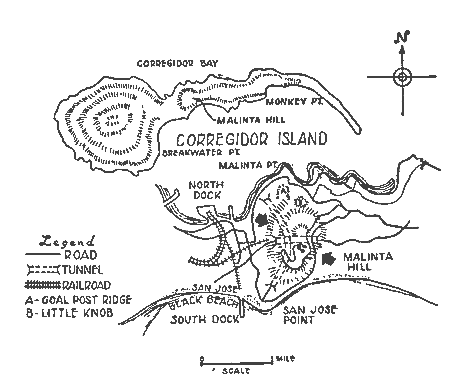 |
|
WE STORM CORREGIDOR _________________ Jan Valtin * Children of Yesterday: The History of the 24th Division in WWII can be purchased from Battery Press
|
No soldier in combat is able to follow the course of battle beyond the ken of his own squad, section, or platoon, particularly in tropical terrain where a man often can see no farther than the front sight of his rifle. Striving to depict men in battle on a division scale, I have made use of notes generously supplied to me by my fellow combat reporters in the 24th Infantry Division. I herewith express my appreciation to Privates Milton Haneline and Raymond Merrigan; Sergeants Luther Hendrickson, Waldo Vandeventer, Verne Mabry, and J. C. Murray; Lieutenant Alan Beaumont and Captain Lloyd Price, all of whom risked their lives to gather the factual raw material for this book. Acknowledgment is also made to Lieutenant William D. J. Gordon for detailed first-hand data on the Division's operations in Bataan and on Corregidor.
We knew what soldiers can and cannot do. War had thrown us together whether we liked it or not; and war had crushed our illusions into the mud. We slugged it out with the Jap in Hollandia. We killed and buried him wholesale on Biak. We fought for seventy-eight days straight on Leyte. We led the drive into Bataan and we caught hell at Zig-Zag Pass. Right after that we were alerted for the storming of Corregidor. To every one of us still alive Corregidor is not a spot of glory, but the echo of a nightmare in hell.
Jan Valtin,
"If the majesty and power of Our Empire be imperilled,
From a Japanese Imperial Rescript
|
|||||
|
Map 80
The invasion fleet heads towards Corregidor'.
|
|
|||||
| * A condensation of this chapter was published in Infantry Journal, August 1945. |
|





